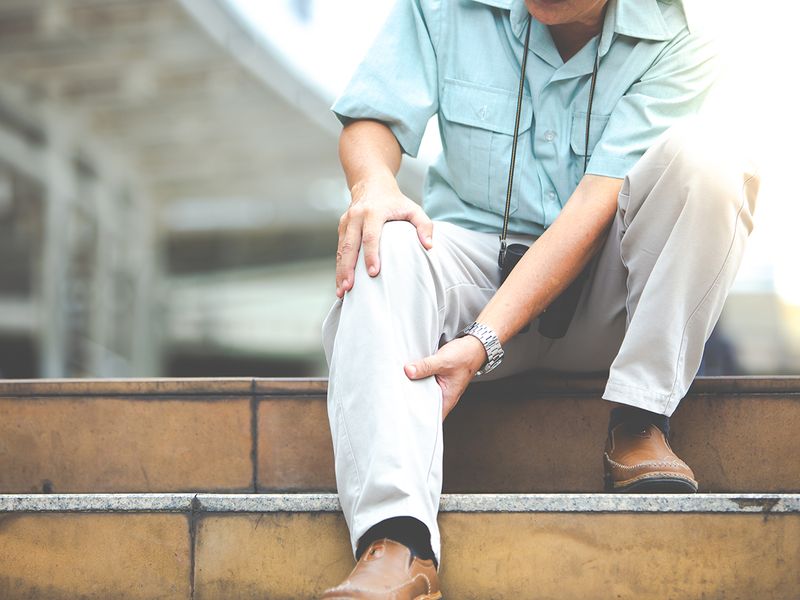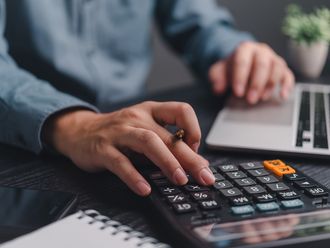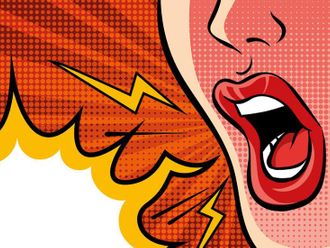
Your shoes say more than you think they do.
Take a look at the soles of your shoes. Is one shoe more worn out than the other? Or do the shoes have scuffed outer edges? This wear and tear doesn’t entirely mean that the shoes are old and need to be thrown away. On the contrary, these are clear signs that something is going wrong with your posture.
So, how do the shoes become the tell-tale signs of what’s going wrong?
When there’s a problem with your spine, it affects the way you walk, says Mitra Chini, a Dubai-based chiropractor. “So if you have lower back pain on the right side, you have a tendency to unconsciously lean towards the opposite side. Your muscles then become tighter. If the problems continue for a long time and it isn’t addressed, it affects your posture, as you have neck pain, and affects the way you walk,” she adds. Eventually, the hip on the opposite side will over-compensate for the side that is weaker. “This gradually shows in your shoes,” says Chini.
What the footwear says…
Your shoes tell you what kind of gait you have. A person who can equally distribute pressure in forefoot, midfoot and hind foot will have neutral posture and gait, explains Humeira Pervaiz, a Dubai-based podiatrist. In the correct stride, your foot should roll forward from heel to toe. The pronation should be neutral, and your weight needs to be balanced on your feet.
If there’s more wear and tear in one shoe as compared to the other, it means you are putting excessive weight on one side, explains Pervaiz. “Some people walk supinated as their foot rolls outward putting more pressure on outer side. Their soles will show wear at the outer ends,” she adds. In the case of excessive supination or rather when your weight leans on the outside of your foot, your shoe will show uneven wear on the outside part of the sole. This leads to more stress on your ankles, resulting in shin splints, calluses and bunions on the outer side of your feet. You will feel pain in your heels and the balls of your feet.

So if you have lower back pain on the right side, you have a tendency to unconsciously lean towards the opposite side. Your muscles then become tighter. If the problems continue for a long time and it isn’t addressed, it affects your posture.
“If your shoes are scuffed on the outer edges, it means there’s a problem with the foot alignment and posture. This is due to uneven weight distribution, which leads to excess pressure on certain parts of your feet. Your shoes will then be scuffed on the outer edges, and your feet will make contact with the ground. This also results in back, and neck pain. On the other hand, if the shoe is more worn out in the front, it means that the person is putting more weight in the forefoot. This is a common cause of metatarsalgia, which means pain in metatarsals [toes]. If the shoe soles develop wrinkles, it means that the shoe is not doing what it was supposed to do. It has lost its capacity to support foot movement," adds Pervaiz.

The damaging postures
Take a look at your shoes. Normally, there is wear and tear on the outside portion of the heel. Look at them on eye level, the wear should actually be on the outside, and not in the inside, explains Sofia Kia Turner, a Dubai-based physiotherapist and rehabilitation specialist. “It should not be anywhere inside. People who overpronate, have a lot of wear on the inside of the heel. This could also mean that they have a swayback posture.” When a person has a swayback posture, they get a particular curve in their spine. They appear to be leaning back, in a rather slouching fashion.
Overpronation is when your foot rolls towards the inside. This occurs when your gait eventually leads to the arches of your feet flattening more than normal. It puts strain on muscles, tendons and ligaments that support your arches. It also increases the risk of injury. Overpronation can be caused by bunions, heel pain, hip pain or back pain. ( Source: Abu Dhabi-based Cleveland clinic)

The wear should not be inside in the shoe. People who overpronate, have a lot of wear on the inside of the heel. This could also mean that they have a swayback posture, which means a particular curve in their spine.
There are different kinds of damaging postures that are explained by the shoes themselves. For instance, when there is heavy wear on the ball of the foot, it is an indication of a lordotic posture. Lordosis occurs if your spine curves a little too much forward and pushes your posture out of its alignment.
If you’re the sort who finds heavy wear and tear at the front of the shoe, especially the big toe, it could be a sign of thoracic kyphosis. Here, your weight is being brought to the front of the feet, themselves, says Turner. In kyphosis, the excessive curving of the spine results in the rounding of the upper back.

If the shoe is more worn out in the front, it means that the person is putting more weight in the forefoot. This is a common cause of metatarsalgia, which means pain in metatarsals [toes]. If the shoe soles develop wrinkles, it means that the shoe is not doing what it was supposed to do. It has lost its capacity to support foot movement
Moreover, if your shoes get further worn out due to problems with posture, it aggravates the problem multifold. Shoes that are worn out can have a detrimental effect on your posture and can cause dangerous back and foot pain in the long run, explains Ruhil Badiani, a podiatrist at the Dubai-based Cornerstone clinic. “The main concern is arch support. When you walk, you put the force of five times your body weight on each of your feet. If your feet do not absorb the impact properly, you can develop issues with your feet and back and possibly cause injury,” she elaborates further.
How to correct your posture?
For starters, physiotherapy.
"You check the person's normal standing position, knee-bending, and see whether they have a high arch or a lower arch. Depending on their assessment on the foot balance machine, we see whether it is a normal arch, pronation or supination. Many people have neck and shoulder problems, or hip problems. So sometimes we do in sole modifications, which is done for flat arches," explains Sreevarsha Panakada Veedu, a physioptherapist from Dubai. In-sole modifications mean changes made to the shoes, to suit the individual.
While physiotherapy is a clear solution, here are some other methods that you can try too:

The main concern is arch support. When you walk, you put the force of five times your body weight on each of your feet. If your feet do not absorb the impact properly, you can develop issues with your feet and back and possibly cause injury
• Stay active: Exercise is always intensely beneficial, especially yoga. Work on excercises that strengthen your core, basically the muscles around your back, abdomen and pelvis.
• Watch your weight: Excessive weight can lead to strain on your abdomen muscles, pain in the pelvis and spine. This can hurt your posture.
• Use comfortable shoes: Avoid high heels, they can damage your walking style and put more stress on your muscles.
• When you’re sitting for long hours, switch sitting positions often, take regular walks. Make sure that your back is fully supported, as well as your thighs and hips. Sit on a well-padded seat.
Are you wearing the wrong shoes?
Heels can be give you those sassy vibes, but in the long run, it’s a high price to pay.
Take a look at the shoes that you are wearing. A lot of women wear closed toed heels and men also wear shoes with a pointed toe, explains Shaazia Qureshi, Dubai-based pilates and fitness coach. Elaborating further, she says, “Shoes which are narrow from the front actually make our feet less stable, as it reduces the surface area on the floor. The wider the front of the shoe, the better it is for your toes to spread out and for your feet to get a better grip and stability while you move.”

Shoes which are narrow from the front actually make our feet less stable, as it reduces the surface area on the floor. The wider the front of the shoe, the better it is for your toes to spread out and for your feet to get a better grip and stability while you move.
Heels can be quite damaging, adds Qureshi. “For women, the higher the heels, the worse it is for your feet. It puts a lot of pressure on the metatarsals and the toes, and contracts the calf muscle for an extended period of time, which can cause weaker knees, hamstrings and a weaker spine,” she adds.

Pervaiz suggests avoiding fabric shoes as they don’t provide the ankles enough stability. Instead, fabric lets your ankles be loose. She advises the utilisation of thick-soled shoes, which can be tied and untied. “If you ever have sudden pain on one side, those shoes don’t allow you to put more weight on the other side. It helps in equally distributing your weight,” she says. Moreover, thick-soled shoes give you the arch that you need. Pervaiz adds that heels are not ideal either, as they change the mechanism of the foot. Even complete flats are not useful, as it does not provide you with an arch.













